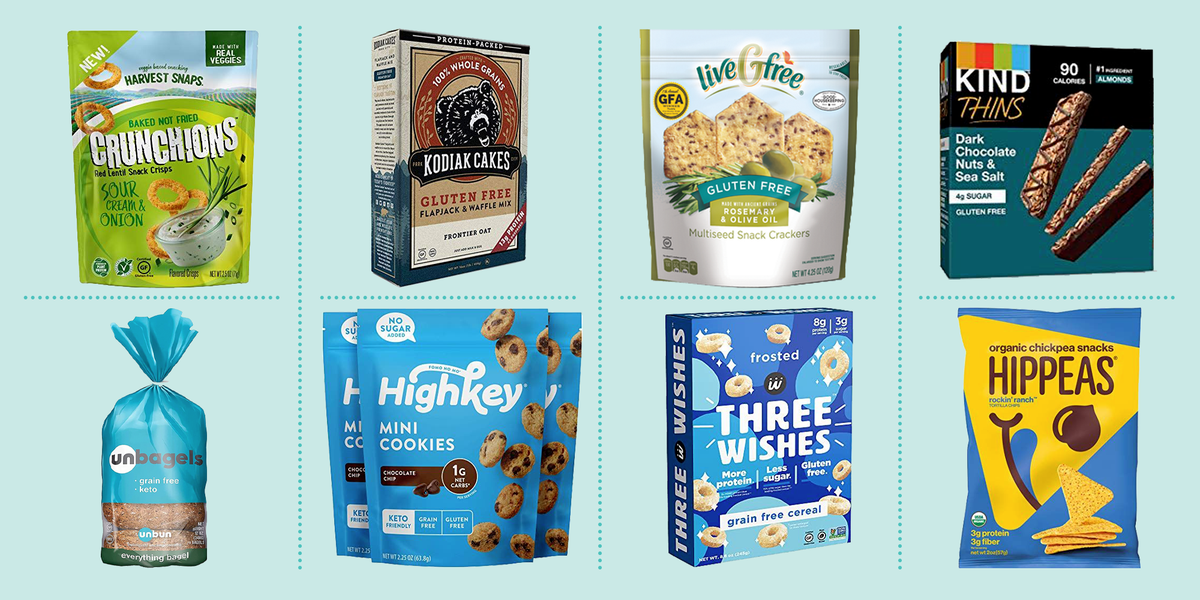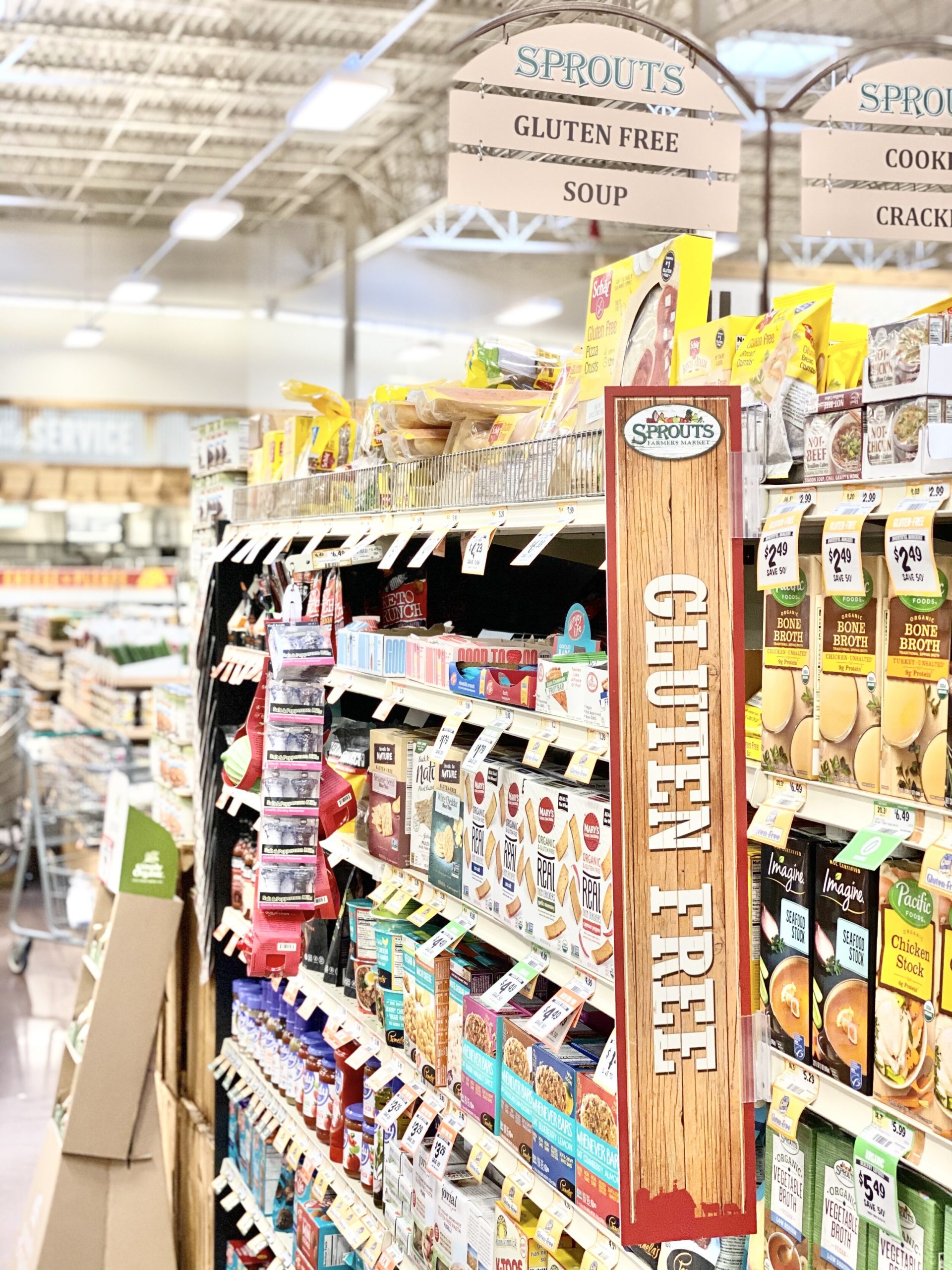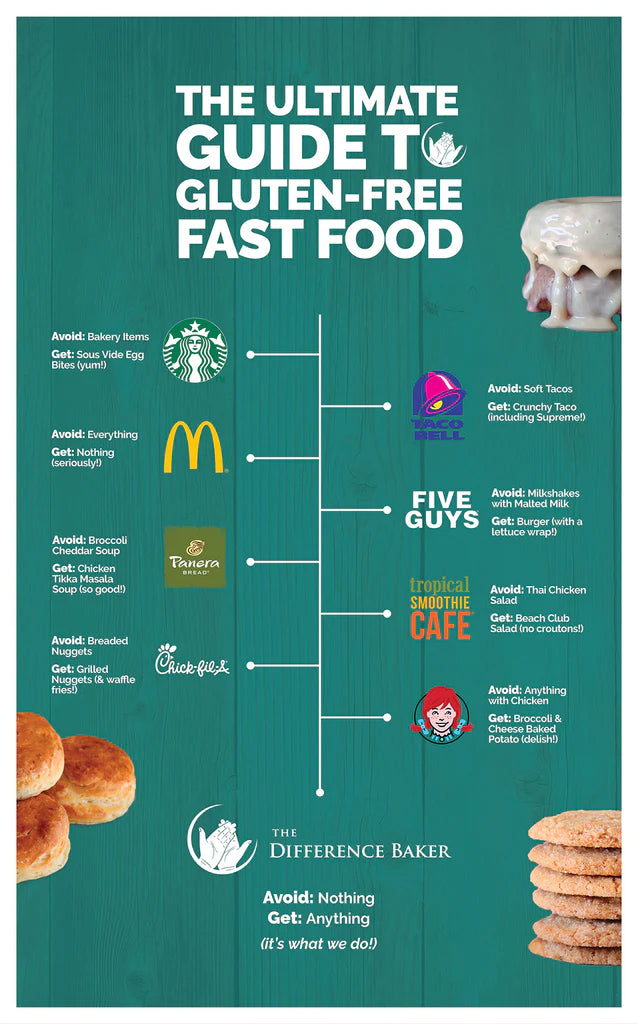Gluten-free groceries are essential for those with gluten intolerance or celiac disease. They help maintain a healthy, balanced diet.
Many people today follow gluten-free diets due to health reasons. Gluten-free groceries ensure that those with gluten sensitivities can enjoy safe and nutritious meals. These products range from gluten-free bread and pasta to snacks and desserts. Supermarkets and specialty stores now offer a wide variety of gluten-free options.
This growing availability makes it easier to find and enjoy gluten-free foods. Reading labels carefully helps in identifying safe products. Gluten-free diets can be delicious and diverse with the right choices. Enjoy a healthy lifestyle by incorporating these groceries into your diet.

Credit: www.goodhousekeeping.com
The Rise Of Gluten-free Eating
In recent years, gluten-free eating has gained immense popularity. More people are choosing gluten-free groceries for various reasons. This shift has led to a significant rise in the availability of gluten-free products.
Why It’s More Than A Trend
Many think gluten-free eating is just a trend. But it’s much more than that. People have real health reasons for going gluten-free. Let’s explore some of these reasons.
| Reason | Description |
|---|---|
| Celiac Disease | This is a serious autoimmune disorder. People with celiac disease cannot eat gluten. |
| Gluten Sensitivity | Some people feel sick after eating gluten. They do not have celiac disease but still suffer from symptoms. |
| Health Consciousness | Many people believe that a gluten-free diet is healthier. They choose it to improve their overall well-being. |
Health Benefits For Various Conditions
Gluten-free diets offer several health benefits. These benefits are not limited to those with celiac disease.
- Improved Digestion: Many people report better digestion. They experience less bloating and gas.
- Increased Energy Levels: People often feel more energetic. They suffer from less fatigue.
- Reduced Inflammation: A gluten-free diet can reduce inflammation. This is especially helpful for people with arthritis.
Studies show that gluten-free diets can help with other conditions too. These include irritable bowel syndrome (IBS) and certain skin conditions.
Decoding Labels: Gluten-free Certification
Understanding gluten-free certification can be confusing for many shoppers. This guide will help you identify trustworthy gluten-free products. Knowing what to look for ensures you make the right choices for a gluten-free diet.
Symbols And Certifications To Look For
When shopping for gluten-free groceries, certification symbols are your best friends. These symbols ensure that the products are safe and meet gluten-free standards. Here are some common ones:
- Certified Gluten-Free: This symbol is often a circle with the letters GF. It’s a reliable sign that the product has been tested and meets strict standards.
- GFCO (Gluten-Free Certification Organization): This seal is another trustworthy symbol. It guarantees the product contains less than 10 ppm (parts per million) of gluten.
- CSA (Celiac Support Association): Look for this seal to ensure the product is free from cross-contamination.
Misleading Labels And Marketing Tricks
Some labels can be misleading, making it tricky to identify truly gluten-free products. Here are some marketing tricks to watch out for:
- “Wheat-Free” Label: This does not always mean gluten-free. Other grains like barley or rye can still be present.
- “No Gluten Ingredients Used”: This might mean the product was made in a facility that processes gluten. Always check for cross-contamination warnings.
- “Naturally Gluten-Free”: Some foods, like fruits and vegetables, are naturally gluten-free. But processed versions might contain gluten additives.
Reading labels carefully and knowing these tricks can help you avoid gluten. Stay informed and choose wisely to maintain a healthy gluten-free lifestyle.
Must-have Staples For Your Gluten-free Pantry
Building a gluten-free pantry doesn’t have to be hard. With the right staples, you can enjoy delicious and nutritious meals every day. Here are some must-have essentials for your gluten-free pantry.
Whole Grains And Flours
Whole grains and flours are the backbone of a gluten-free diet. They provide essential nutrients and versatility in cooking.
- Quinoa: A protein-rich grain perfect for salads and side dishes.
- Brown Rice: A hearty grain that complements any meal.
- Amaranth: A tiny grain packed with fiber and protein.
Here are some gluten-free flours you need:
| Flour | Uses |
|---|---|
| Almond Flour | Great for baking and breading. |
| Coconut Flour | Perfect for cakes and cookies. |
| Chickpea Flour | Ideal for savory dishes. |
Sauces And Condiments
Having a variety of sauces and condiments ensures your meals are flavorful and exciting.
- Tamari: A gluten-free soy sauce alternative.
- Sriracha: Adds a spicy kick to any dish.
- Mustard: Perfect for sandwiches and dressings.
Other essential condiments include:
- Apple Cider Vinegar: Great for dressings and marinades.
- Balsamic Vinegar: Adds depth to salads and sauces.
- Hot Sauce: Perfect for spicing up meals.
Fresh Finds: Fruits And Vegetables
Discovering fresh, gluten-free groceries can be exciting, especially with fruits and vegetables. These natural foods are inherently gluten-free, offering a plethora of options. Let’s dive into some seasonal picks and the debate between organic and non-organic produce.
Seasonal Picks
Choosing seasonal fruits and vegetables ensures you get the best taste and nutrition. Seasonal produce is often more affordable and fresher. Here are some top picks:
| Season | Fruits | Vegetables |
|---|---|---|
| Spring | Strawberries, Pineapples | Asparagus, Spinach |
| Summer | Watermelons, Peaches | Tomatoes, Zucchini |
| Fall | Apples, Pomegranates | Pumpkins, Sweet Potatoes |
| Winter | Oranges, Kiwis | Brussels Sprouts, Kale |
Keep an eye on these seasonal picks to enjoy the best flavors and nutrients.
Organic Vs. Non-organic
The choice between organic and non-organic produce can be confusing. Organic fruits and vegetables are grown without synthetic pesticides and fertilizers. This can be better for your health and the environment. Here are some pros and cons:
- Organic Produce
- Fewer chemicals and pesticides
- Better for the environment
- Sometimes more nutrients
- Non-Organic Produce
- Usually cheaper
- More available
- Can be just as nutritious
Consider your budget and health needs when choosing between organic and non-organic options. Both can be part of a healthy, gluten-free diet.
Protein Sources: Plant-based And Animal-based
Finding gluten-free protein sources can be challenging. It’s important to include both plant-based and animal-based proteins in your diet. This helps ensure you get all essential amino acids. Below are some excellent options for gluten-free protein sources.
Meat And Fish
Meat and fish are great sources of protein. They are naturally gluten-free and can be prepared in various ways. Be sure to avoid any added sauces or marinades that may contain gluten.
- Chicken: A lean protein source, great for grilling or baking.
- Beef: Opt for grass-fed beef for a healthier choice.
- Fish: Salmon, tuna, and cod are rich in omega-3 fatty acids.
- Pork: Another versatile protein, perfect for roasting or grilling.
Legumes And Nuts
Legumes and nuts are excellent plant-based protein sources. They are naturally gluten-free and provide fiber, vitamins, and minerals.
- Chickpeas: Use in salads, soups, or make hummus.
- Black Beans: High in protein and fiber, great for soups and stews.
- Lentils: Cook them into soups or salads for a protein boost.
- Almonds: A healthy snack, also great in salads or as almond butter.
- Peanuts: Use as a snack or make peanut butter for a protein-rich spread.
Incorporating these protein sources ensures a balanced, gluten-free diet. Both plant-based and animal-based proteins offer unique benefits. Choose a variety to meet your nutritional needs.

Credit: www.milkandhoneynutrition.com
Snacking Smart: Healthy Gluten-free Options
Choosing healthy snacks can be challenging, especially for those on a gluten-free diet. The right snacks can provide energy, satisfy cravings, and keep you feeling full. Let’s explore some smart gluten-free snack options that are both delicious and healthy.
Pre-packaged Snacks
Pre-packaged gluten-free snacks are convenient and perfect for busy lifestyles. Here are some popular options:
| Snack | Description |
|---|---|
| Rice Cakes | Light and crunchy, often topped with peanut butter or avocado. |
| Fruit Bars | Made from real fruits, they are sweet and satisfying. |
| Gluten-Free Crackers | Pair with cheese or hummus for a quick snack. |
| Nut Mixes | Rich in protein, perfect for a quick energy boost. |
| Veggie Chips | Crunchy and full of flavor, made from real vegetables. |
Diy Snack Ideas
Making your own gluten-free snacks can be fun and rewarding. Here are some easy and healthy ideas:
- Fruit and Nut Mix: Combine dried fruits and nuts for a tasty trail mix.
- Veggie Sticks with Hummus: Slice carrots, cucumbers, and celery, and dip them in hummus.
- Yogurt Parfait: Layer gluten-free granola, yogurt, and fresh berries.
- Apple Slices with Nut Butter: Slice an apple and spread almond or peanut butter on top.
- Banana Oat Cookies: Mix mashed bananas with oats and bake for a healthy cookie.
These snack ideas are not only gluten-free but also packed with nutrients. Enjoy snacking smart and staying healthy!
Dairy And Dairy Alternatives
Finding gluten-free dairy products can be a challenge. Many traditional dairy items contain hidden gluten. This section will help you explore safe and delicious options for your diet.
Cheese And Milk Choices
Most natural cheeses are gluten-free. Always check the labels to be sure. Avoid processed cheeses as they may contain gluten.
| Cheese Type | Gluten-Free Status |
|---|---|
| Cheddar | Gluten-Free |
| Swiss | Gluten-Free |
| Blue Cheese | Check Label |
| Processed Cheese | May Contain Gluten |
Milk is generally gluten-free. Look for plain milk without additives. Flavored milk can contain gluten.
- Plain Milk – Safe
- Flavored Milk – Check Label
- Yogurt – Check for additives
Plant-based Alternatives
Plant-based milk is a great option for gluten-free diets. Ensure the product is labeled gluten-free.
| Plant-Based Milk | Gluten-Free Status |
|---|---|
| Almond Milk | Gluten-Free |
| Soy Milk | Check Label |
| Oat Milk | Check Label |
| Coconut Milk | Gluten-Free |
Plant-based cheese is also available. These products are often made from nuts or soy. Always verify the gluten-free status.
- Nut-Based Cheese – Check Label
- Soy-Based Cheese – Check Label
- Rice-Based Cheese – Check Label
Many gluten-free options exist in the dairy and dairy alternatives category. Always read labels carefully to ensure safety.
Eating Out And Staying Gluten-free
Eating out with a gluten-free diet can be challenging. But with the right strategies, you can enjoy delicious meals without worry. This section will guide you on navigating restaurant menus and offer tips for dining out gluten-free.
Navigating Restaurant Menus
Many restaurants now offer gluten-free options. But not all gluten-free meals are safe. Always ask questions about food preparation. This ensures no cross-contamination.
Look for dishes labeled gluten-free on the menu. If unsure, ask the server for help. You can also check the restaurant’s website for a gluten-free menu before visiting.
Here’s a quick guide to common gluten-free menu items:
| Dish Type | Gluten-Free Options |
|---|---|
| Appetizers | Fresh salads, vegetable platters, shrimp cocktail |
| Main Courses | Grilled meats, fish, steamed vegetables, rice dishes |
| Desserts | Fruit salads, gluten-free cakes, sorbets |
Tips For Dining Out
Follow these tips to stay gluten-free while dining out:
- Call ahead: Contact the restaurant to ask about gluten-free options.
- Inform your server: Let them know you need a gluten-free meal.
- Avoid fried foods: They are often cooked in shared fryers, causing cross-contamination.
- Choose simple dishes: Opt for grilled meats, steamed vegetables, and plain rice.
- Bring your own: Carry gluten-free sauces or dressings to ensure safety.
By following these tips, you can enjoy a safe and tasty gluten-free meal at any restaurant.
Meal Planning And Preparation
Planning and preparing meals can be challenging when you need to eat gluten-free. With the right approach, you can enjoy delicious meals without gluten. Let’s explore some effective tips and techniques for successful gluten-free meal planning and preparation.
Weekly Meal Prep Tips
Planning your meals for the week can save time and reduce stress. Here are some tips to help you:
- Create a meal plan: Write down what you’ll eat for breakfast, lunch, and dinner each day.
- Make a shopping list: List all ingredients you’ll need for the week. Stick to your list to avoid impulse buys.
- Batch cook: Prepare large quantities of food that you can use throughout the week. This includes soups, stews, and casseroles.
- Store properly: Use airtight containers to keep your food fresh. Label them with the date.
- Prep ingredients: Chop vegetables, marinate meats, and measure spices in advance. This saves time during busy weekdays.
Gluten-free Cooking Techniques
Cooking gluten-free requires some special techniques. Here are some methods to ensure your meals are both delicious and safe:
- Use separate utensils: Prevent cross-contamination by using different utensils for gluten-free cooking.
- Read labels: Always check food labels for hidden gluten. Some sauces and seasonings contain gluten.
- Experiment with alternatives: Use gluten-free flours like almond, coconut, or rice flour for baking. Try quinoa, rice, or gluten-free pasta as substitutes for wheat-based products.
- Thicken sauces differently: Use cornstarch or arrowroot powder instead of wheat flour to thicken soups and sauces.
- Explore new recipes: Find gluten-free recipes to keep your meals exciting. Variety helps prevent boredom.
| Task | Time Saved |
|---|---|
| Create a meal plan | 1 hour/week |
| Batch cook | 2 hours/week |
| Prep ingredients | 30 minutes/day |
With these tips and techniques, you can enjoy a variety of delicious gluten-free meals. Happy cooking!

Credit: thedifferencebaker.com
Resources And Support
Living a gluten-free lifestyle can feel overwhelming. But there are many resources and support systems to help you. This section covers some valuable tools to make your journey easier. From online communities to specialized apps and websites, there’s plenty of help available.
Online Communities
Connecting with others who understand gluten-free living is crucial. Online communities offer a space to share tips, recipes, and support. These groups can be found on various platforms.
- Facebook Groups: Many groups are dedicated to gluten-free living. Members share recipes, product recommendations, and support.
- Reddit: Subreddits like r/glutenfree provide a wealth of information and community support.
- Forums: Websites like Celiac.com have active forums where you can ask questions and share experiences.
Apps And Websites For Gluten-free Living
Technology can make gluten-free living easier. There are several apps and websites designed to help you find gluten-free products and recipes.
| App/Website | Description |
|---|---|
| Find Me Gluten Free | A helpful app for finding gluten-free restaurants near you. User reviews guide you to safe dining options. |
| Gluten-Free Scanner | This app lets you scan barcodes to check if products are gluten-free. It’s quick and easy to use. |
| Gluten-Free Living | A website offering a range of gluten-free recipes, articles, and tips. It’s a comprehensive resource for anyone on a gluten-free diet. |
Utilizing these resources can make your gluten-free journey smoother. Support and information are key to maintaining a healthy and happy gluten-free lifestyle.
Frequently Asked Questions
What Grocery Items Are Gluten-free?
Gluten-free grocery items include fresh fruits, vegetables, meat, fish, dairy, rice, quinoa, beans, nuts, and gluten-free labeled products.
What Common Foods Are Gluten-free?
Common gluten-free foods include fresh fruits, vegetables, meat, poultry, fish, eggs, dairy, nuts, seeds, and legumes. Gluten-free grains include rice, quinoa, and corn. Always check labels for processed foods.
Which Supermarket Has The Best Gluten-free Range?
Tesco is often praised for its extensive gluten-free range. They offer a wide variety of gluten-free products.
What Foods Are Surprisingly Gluten-free?
Many surprising gluten-free foods include rice, potatoes, quinoa, corn, fresh fruits, vegetables, eggs, meat, and dairy products.
Conclusion
Embracing a gluten-free lifestyle is easier with the right groceries. With options growing, it’s simpler to stay healthy. From fresh produce to gluten-free snacks, your choices are plentiful. Always read labels and choose trusted brands. Enjoy delicious, nutritious meals without gluten.
Start your journey towards better health today.









Leave a Reply